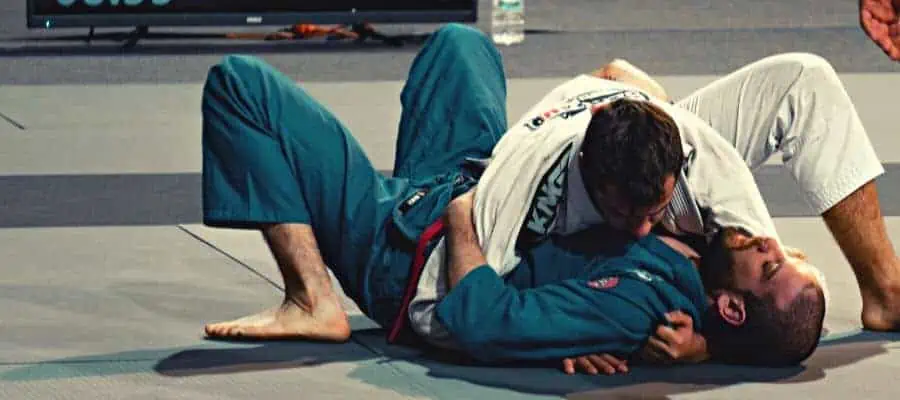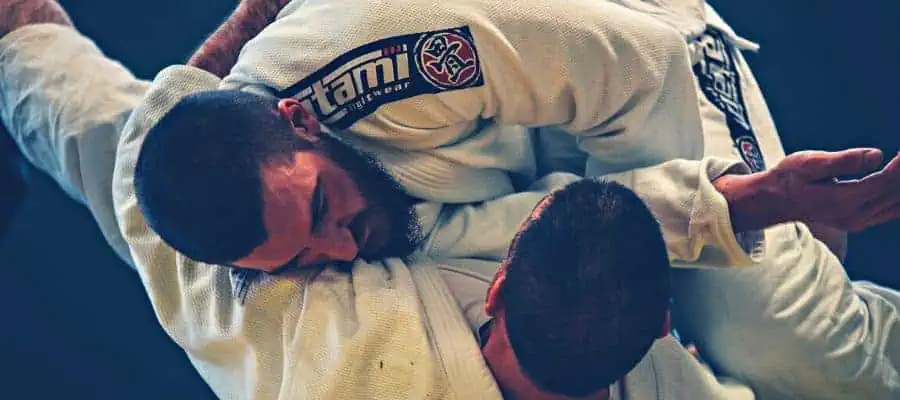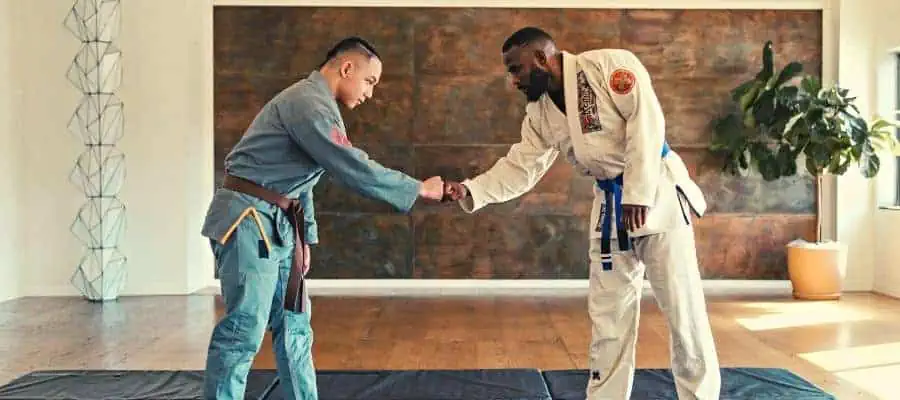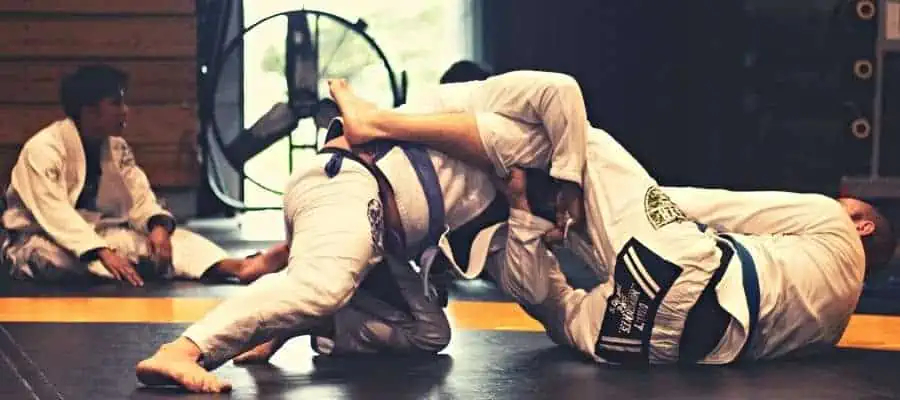In Brazilian Jiu-Jitsu gyms around the world, you can find many people against or for strength training. Some believe it helps increase performance, while others advocate it’s detrimental. Although a couple of these arguments shouldn’t be ignored, the benefits of strength training are already proven. In fact, they go beyond what we used to think a few years ago. There are some reasons why you should incorporate these activities into your schedule.
Injury Prevention

Injury prevention is essential for any fighter. That’s the most important reason why you should incorporate strength training into your routine. BJJ is a very strenuous activity. It’s considered less risky than most Martial Arts, yes. But it’s impossible to find an experienced athlete without problems with injuries during his career.
The risk of injury increases with age too. Not doing any strength training can be almost harmless at a very young age. But time, eventually, brings the bills. This happens for many reasons. It’s expected to see a reduction in type II muscle fibers. These cells are also called “fast-twitch muscle fibers.” This loss increases the probability of sprains.
Another factor that can increase the risk of injuries is a previous injury. The more experienced the athlete, the biggest the probability of having had an injury. The reduction in strength and flexibility usually observed with aging may also increase the risk of an injury. Strength training can work to improve these parameters.
These pieces of information are not a recent discovery. There are researches from the ’80s that show the importance of resistance training for the reduction of sports injuries. Some training can lead to strength imbalance in the agonist and antagonist muscles. This creates a predisposition for injury in an athlete. The strength training can make them balanced again.
Lifting weights also strengthens muscles, ligaments, tendons, and bones. These adaptations make it less likely for injury to occur.
Power-To-Weight Ratio Increase

The power-to-weight ratio, or PWR, is the amount of power a man can generate given his size. BJJ competitions, as for most Martial Arts, are divided by weight categories. This means that having a higher PWR is usually an advantage. Jiu-Jitsu is highly technical, but the importance of strength is undeniable.
Tendons, ligaments, and muscles respond to physical activity by increased metabolism and strength. Experiments have shown that, after a surgery, strength is regained faster if physical activity is performed. This is why physiotherapy is always prescribed as a treatment for the injured. In some cases, it’s necessary to avoid irreversible loss of some kinds of movement.
Strength training may increase muscle mass and, consequently, body weight. But it increases, even more, the power outcomes. This way, strength training causes a direct and positive impact on PWR. These increments might not look like significant differences. However, it’s always important to remember that details in high-level competition may define a fight.
Nicolas Gregoriades once called the axiom “technique is invincible” the biggest lie of BJJ. As a 3rd degree Jiu-Jitsu black belt under Roger Gracie, he said:
“Strength plays a huge role in jiu-jitsu performance and can very often overcome technique. In my opinion, strength is just as important as technique”.
There are some examples in the real world. Nick Rodriguez is one of them. He was presented to BJJ in 2018. Only one year later, he has become the 2019 ADCC World Championship runner-up. The one thing that makes Nick so different? He is incredibly strong. Yes, the technique is important, to say the least. But don’t you ever underestimate strength.
Resistance To Submission

Only a few fighters came close to taking the UFC Light-Heavyweight belt out of Jon “Bones” Jones. One of them was the Brazilian BJJ black belt, Vitor “The Phenom” Belfort.
In the UFC 152, in September 2012, Jon Jones submitted Belfort in the 4th round with an Americana lock. But to get there, he had to survive a nasty armbar in the very first round. There was some technique involved, but the truth is that Jones broke the lock mainly by strength. He suffered a strained ligament in his right elbow when Belfort caught him, but he was not submitted. If he were a less athletic fighter, the legend would have ended right there.
Not ever a fighter will be able to resist a submission only by strength. If a lock is tight enough, it’s a matter of time to finish a fight. But, sometimes, you just need to get a few more seconds. Often, a lock is done at the end of a round. Getting a few seconds by strength may lead to a saved by the bell situation.
Speed Increase

Many experiments have shown that strength training can improve speed. This is especially true when it comes to acceleration. This is the most important kind of speed parameter for the Martial Arts.
With strength training, muscle structure becomes more responsive to fast changes. This happens because this kind of training increases the number and size of the fast-twitch muscle fibers. This is essential in fighting because we’re talking about a game of dispute. One cannot simply do whatever goes into his mind. Many actions in BJJ and other Martial Arts are, in fact, reactions.
Decreasing the reaction time and increasing the movement speed is the key to success. You can do it by adding more strength training to your routine.
Immunity Increase

Physical activity of pretty much any kind can be a great ally to your immunity. Sports increase circulation efficiency and immuno-factors production. There is also an improvement in health in general that makes you less susceptible to infection.
Strength training, specifically, induces important changes in physiological, immunological, and inflammatory biomarkers. This indicates a better outcome for the body in fighting diseases of any kind. A healthy body is essential to performance. You can’t train well enough if you’re always making a massive effort to fight viruses and other microorganisms.
BJJ fighters are even more susceptible to infections daily when compared to other fighters. This happens because a Jiu-Jitsu fight takes place mainly on the ground. No matter how clean a gym is, daily use makes it a perfect environment for some kinds of microorganisms. No wonder there are plenty of skin diseases related to BJJ practice.
The most common skin infections in BJJ are ringworm, impetigo, herpes, and staphylococcus. None of these is usually dangerous, but it’s just an example of how dirty a mat can be. In times of Covid-19 and other infections transmitted by air, melee combat is a risk factor. For some sports, it’s possible to keep a safe distance. For BJJ and other Martial Arts, this is simply impossible.
For all these reasons, it’s essential to keep a healthy body. If you can improve your immune response, including strength training in your routine, that’s the way to go.
Mental Health Improvement

In a review in 2010, the Ph.D. Patrick J. O’Connor and collaborators went through an extensive study on the mental health benefits of strength training. Strength training influences anxiety, chronic pain, cognition, depression, fatigue, self-esteem, and sleep.
Having a healthy mind is essential in BJJ. The game is about strategy, self-awareness, concentration, and reflexes. Besides, the statement remains true: healthy mind, healthy body. Sleep deprivation, depression, and anxiety are major negative factors in the cognitive equation that makes a good fighter.
The same benefits can be achieved by Martial Arts training, including Jiu-Jitsu. So, the question is: would strength training be helpful for the mental health of a BJJ fighter? Yes. Diversification is also important for mental health. Mental disease treatments are more effective when the stimulation comes from different sources.
That has been observed for depression, Alzheimer’s, and Parkinson’s disease. Different activities activate different parts of the brain. There are similarities, for sure, but the strength training also has singularities. It’s always important to mix physical activities up to obtain better outcomes.
Flexibility Increase

Flexibility is one of the most important features for any BJJ fighter. It makes you reach positions you would otherwise not. This way, you can submit easier, and it’s harder to submit you.
Contrary to what many believe, strength training can improve your flexibility. There’s a myth in the BJJ world that pleads that lifting weights can make your muscles “shorter” and reduce flexibility. A 1991 study compared flexibility among athletes who lift weights. It concluded that bodybuilders were less flexible than most of their counterparts. It set this discussion on fire.
However, this same study also concluded that the group with better results was the Olympic-style weightlifters. So, weight lifting does not reduce flexibility. The type of training might, though.
Today, we know that weight lifting can increase flexibility with a full range of motion. The training for muscle mass gain and strength increase is entirely different. As a Jiu-Jitsu fighter, you should not train just for muscle mass. You can and should create routines that improve both strength and flexibility. This is what will make you a better fighter.
Stamina Increase

Muscle mass can be a problem. The bigger your muscles, the more oxygen they consume. Shortness of stamina is a problem in some weight categories in many Martial Arts. But there are two things you must consider.
First, you will usually fight people of approximately the same weight as yours. That means you don’t need to have the stamina of a guy three weight categories below yours. You must fit your own weight class.
The second is that strength is not necessarily related to the size of a muscle. A general positive relation exists between the two variables. However, several studies show a clear dissociation. There may have an increase in muscle size with no change or even a decrease in strength. Many also presented an increase in strength without an increase in size.
To sum up, you can increase your strength without reducing your stamina. More than that: with the proper training, you can improve it.
Fewer repetitions with more weight increase your strength. More repetitions with less weight build up endurance. You will need both of them. The good news is that you can conjugate these training and have both benefits. So, it’s just a matter of designing the proper routine.
Bones Strength

Sometimes, a massive amount of pressure may be put out of the blue over a bone in a Jiu-Jitsu fight. The fact that both fighters are always moving makes the consequences unpredictable. This is a risk factor for fractures.
Bone fractures are severe. Besides the time a bone takes to be healed, it can cause secondary issues. Usually, when a fracture occurs, there is also tissue damage. If it is an open fracture, it becomes even worse. When your muscles and vessels are exposed, they become a pathway for infections. Some of them can affect the bone itself, and surgery may be necessary.
All of this might lead to a tragic situation that will put you on the mat for a very long time. For this reason, increasing bone resistance is essential. On a certain level, Jiu-Jitsu already does that. A message is sent to the bone-building cells whenever you put pressure over a bone.
The physiological response to that is an increase in bone resistance. The difference is that strength training does it constantly and uniformly. The diversity of Jiu-Jitsu techniques makes it very hard to build consistency. So, by adding strength training to your routine, you’re making it less likely for that nasty armbar to become a long-lasting nightmare.
Daily Activities

Not just of BJJ lives a fighter. It doesn’t matter what you do; you have a life to take care of. Martial Arts training, including BJJ, can help you in many of your day-to-day activities. But not all of them. Try swimming for a very long time, and you will understand.
You might have enough stamina from your Martial Arts background. However, you will not use the same muscles. As a consequence, you will feel soreness. You might even hurt yourself trying too hard. The same can be said about running, playing a long tennis match, or a good football game.
You can’t be prepared for anything if you just train one thing. One of the best features of strength training is that you can quickly diversify it. You can design it to englobe pretty much every muscle in your body. With that said, strength training is good for everybody. It helps you to be prepared for no matter what comes.
Conclusion
BJJ is already a great ally to your body. It helps burn fat, build muscles, and keep your mind in a good place. Besides, it makes you healthier and more resistant to adversities. But adding some strength training will make these processes more efficient. Besides that, the strength training will help make you a better fighter.
Some will argue that adding strength training to your routine will take Jiu-Jitsu time out of it. That’s true, but everything is a tradeoff. You might lose a small amount of time on technique learning, but the benefits are real.
Recent Posts
What is Manachai's Fighting Style? Unveiling Muay Thai Mastery
Manachai, a celebrated figure in the Muay Thai world, has captivated audiences with his exemplary martial prowess. Hailing from the heartlands of Thailand, his name is synonymous with the art of...
What Was Chamuekpet Hapalang's Fighting Style? Unveiling Techniques
Chamuekpet Hapalang was a renowned figure in the world of Muay Thai (record 200-48-2), embodying a fusion of Muay Bouk and Muay Khao styles. Originating from Thailand, the art of Muay Thai is known...
